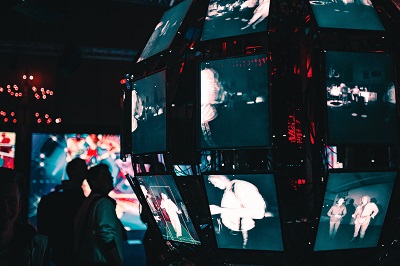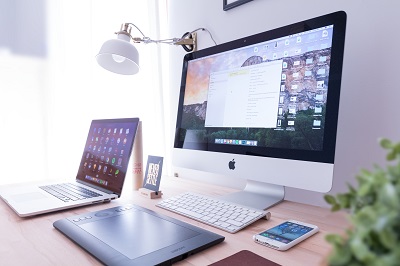Client part settings

There are a lot of features and settings in video surveillance software Xeoma, some of them work on the server part and some on the client one. Each part is responsible for its own configurations. For example, most video analytics processes are running on the server part, while the client part shows the result of these processes. You can find more information about the difference between parts in our article. If the server part settings are more or less clear for users, the settings of the client part sometimes course questions. In this material we would like to share with you the key aspects of the client part and its possibilities.
What is the client part?
While using any program there are always two parts: one, invisible to users (the server part), and another, the visible client part. The most important task of the client part is decoding difficult processes that are happening inside the program, and their transformation into a familiar view to the human eye. In Xeoma the client part has expanded functionality. It allows not only to control and preview the changes happening inside the program, but to assume the load from the server part as well.
Client decoding
Sometimes the server part can be overloaded with multiple tasks or other processes demanding a lot of core memory. In such cases Xeoma doesn’t get enough power for decoding video flows on the server. This is what the client decoding is used for. In order to reduce the load on the server, you can move the decoding process to the client side. Thus, the server will receive and store H264 streams in compressed form, and the decoding will be started only when the client asks to play the stream. What is more important, this decoding will be done on the receiving device. You can read more about client decoding by following this link.
Viewing mode

As one of the most important goals of Xeoma client part is to preview cameras, there are multiple variants of viewing modes in the program that make using Xeoma easy and comfortable. This feature will be useful for those who have a lot of cameras and due to this have a hard time viewing them simultaneously.
Manage the cameras in different layouts, configure their order on the screen, use the object path visualization function to determine its trajectory, enable automatic opening of the camera on the screen when any detectors are triggered and much more. To learn about all the features of the viewing mode, read this article.
Access rights
If you need to give access to the cameras to several people at the same time, for example security guards, you can create users with individual access parameters to the program functionality. This unique feature increases the security of the video surveillance system, as well as the usability of the program. Read detailed instructions on how to use this feature here.
Several monitors
Do you have many cameras and it is not convenient to view them on one monitor? Use the multi-monitor view function by distributing cameras on different monitors. Read more in our article.
How to configure the client part?
After configuring the server part and setting all the parameters you need, you can connect to your server via several ways:
1. From the same machine where the Xeoma server is installed.
In this case you don’t have to do anything to connect as the client part will automatically connect to your server on your device.
2. From another machine.
Here everything will depend on whether your device from which you are connecting is in the same local network with the server or not. You can find detailed instructions on how to connect to the Xeoma server here.
Free client part app for Android and iOS devices

You can connect to the Xeoma server part not only via PC client but also via your mobile devices like smartphone or tablet. For this purpose we have a free mobile app that you can use for viewing your cameras from anywhere in the world.
1. Download the app from Google Play, App Store, Huawei App Gallery or from our website and install it.
2. Launch the app.
3. If you are using an Android application, you can connect to the Xeoma server via “Main menu” – “Remote access” – “Connect to” by following this instruction.
If you connect to the server via an iOS application then use this instruction.
4. Done, you can now view your cameras from your mobile device.
Web server
Although the client-to-server is considered the primary way of connection, there is an alternative – viewing of cameras through a web browser interface. This can be facilitated by attaching a Web Server module to the camera chain on Xeoma server side, go to module settings and set your login and password to access this service, copy URL and paste it into the search field of your browser.
Please note that the web view is not really a client and has limited functionality.
Xeoma Cloud
If you don’t want to install your own server, you can use our cloud service Xeoma Cloud. All you need is to have cameras, which will be connected to our cloud video surveillance service. The connection to Xeoma Cloud can be made via the Xeoma client installed on your PC or mobile device, or via web interface.
This way the client part plays an important role in Xeoma work. Without the visual part, an important layer of video surveillance would be inaccessible, – you could not view the cameras online, their archives, see the real time results of video analytics and there would be no convenience for operators of large systems. Thanks to the client’s flexible settings, users can improve video quality by reducing server load, adjust the camera viewing modes and much more. When you connect remotely to the server part, the client doesn’t load your device, which makes it possible to access settings and view cameras from anywhere in the world.
September, 29 2021
Read also:
Best Android CCTV app of 2021
Reducing CPU load: full guide
Failover and failback in Xeoma